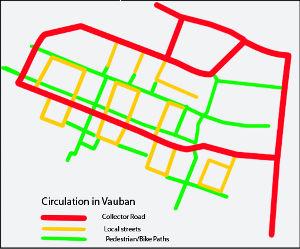 Recent crime research challenges the assumptions of sustainability agenda and planning policies to promote compact, high-density, mixed-used residential developments in walkable and permeable street networks close to public transport.
Recent crime research challenges the assumptions of sustainability agenda and planning policies to promote compact, high-density, mixed-used residential developments in walkable and permeable street networks close to public transport.
Secondary aims are to encourage walking and the use of public transport and to reduce car-use, energy use, pollution, congestion and urban sprawl.
Although permeability is assumed to represent a positive built environment feature which reduces crime by promoting more ‘eyes on the street’, a significant body of research in the field of environmental criminology challenges these assumptions.
Crime research indicates higher levels of crime in such permeable, walkable new-urban mixed usebnareas have .

